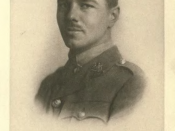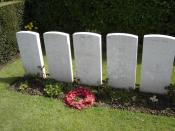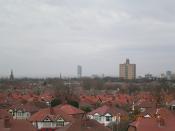One of Wilfred Owen's most well known poems; Anthem for Doomed Youth is a lament for the youths who died in the First World War. The poem compares the noisy and sudden deaths of the young soldiers who die in the war with the deaths of those who die 'back home'. It shows how the usual death rites are replaced with the war's own. It also shows the reactions of the relatives and friends who are left behind. The poem reflects on Owen's personal feelings about the futility of war and his pity for the young men who fight in war. Many of the sounds and images in the poem would have come from his personal experience of the first industrial world war. The poem is lyrical because it does not tell a story but instead paints a vivid picture of the effects of World War One and the feelings of those affected by it.
The poem is told through the eyes of Wilfred Owen. Owen does not address any other characters in the poem. Instead, he seems to have an omniscient view over what is happening on the battlefield and back home. Owen expresses his view on war in this poem that was probably written for the general public to read.
The poem has reoccurring religious imagery. The first line asks 'what passing bells for these who die as cattle'. The simile of the young men being like cattle conjures up the image of cows being led to the slaughterhouse, which gives the reader an idea of mass slaughter. It shows the theme of how war is not heroic, glorious or wonderful. The poem contains many examples of personification because of the links Owen creates between weapons and people involved in death rites. The normally peaceful choir...



WOW
This is an excellent essay for a tenth grader. Well done and keep up the good work.
0 out of 0 people found this comment useful.